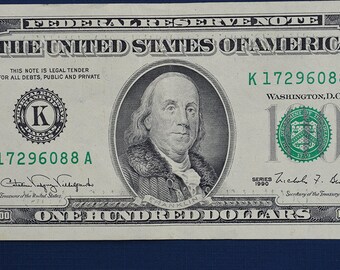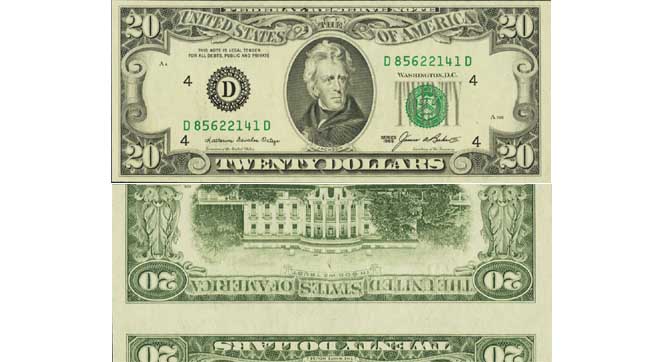


Treasury, "Treasury Department records do not reveal the reason that portraits of these particular statesmen were chosen in preference to those of other persons of equal importance and prominence." The placement of Jackson on the $20 bill may be a historical irony as president, he vehemently opposed both the National Bank and paper money and made the goal of his administration the destruction of the National Bank. It is not clear the reason the bill was switched from Grover Cleveland to Andrew Jackson. Jackson first appeared on the twenty dollar bill in 1928.

The security strip in a twenty-dollar bill glows green under a blacklight. 1905: A new gold certificate $20 note with George Washington on the center of the face.The front design features Hugh McCulloch, and the back has a vignette of an allegorical America. Two different backs exist: both with abstract designs. 1890: A treasury (coin) note with John Marshall on the left of the face.1886: A new silver certificate $20 note with Daniel Manning on the center of the face.The front is similar, but the back is different and printed in brown. The back is orange and features an eagle. 1882: A new gold certificate with a portrait of James Garfield on the right of the face.1878: A silver certificate $20 note with a portrait of Stephen Decatur on the right side of the face.1875: As above, except with a different reverse.1869: A new United States note design with Alexander Hamilton on the left side of the front and Victory holding a shield and sword.1865: A national bank note with "The Battle of Lexington" and of Pocahontas" in black, and a green border.The reverse has a $20 gold coin and various abstract elements. 1863: A gold certificate $20 note with an Eagle vignette on the face.The back is different, with several small variations extant. 1862: A note that is very similar, the first $20 United States note.1861: A demand note with Lady Liberty holding a sword and shield on the front, and an abstract design on the back.Thomas Sully portrait of Andrew Jackson used for the $20 dollar bill from 1928 onward. Twenty-dollar bills are delivered by Federal Reserve Banks in violet straps.

Approximately 11% of all notes printed in 2009 were $20 bills. The Bureau of Engraving and Printing says the average circulation life of a $20 bill is 25 months (2 years) before it is replaced due to wear. Rather than a nickname, this nomenclature was specified by an act of Congress. The twenty dollar gold coin was known as a " double eagle". The twenty-dollar bill in the past was referred to as a "double-sawbuck" because it is twice the value of a ten-dollar bill, which was nicknamed a "sawbuck" due to the resemblance the Roman numeral for ten (X) bears to the legs of a sawbuck, although this usage had largely fallen out of favor by the 1980s. President Andrew Jackson is currently featured on the front side of the bill, which is why the twenty-dollar bill is often called a "Jackson," while the White House is featured on the reverse side. The United States twenty-dollar bill ($20) is a denomination of United States currency.


 0 kommentar(er)
0 kommentar(er)
